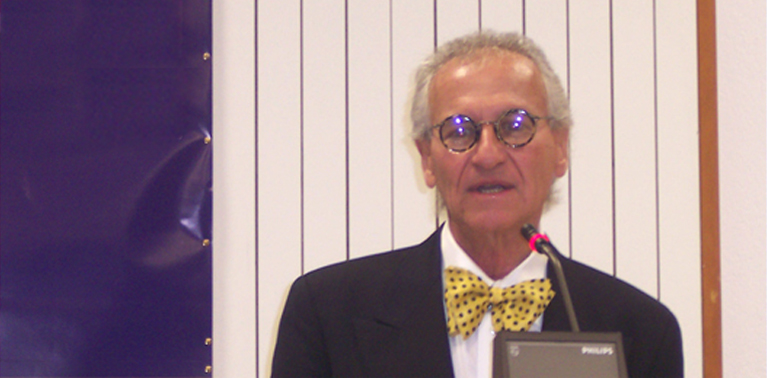ABOUT PHILIP B. KIVITZ
Philip B. Kivitz, MD, Adjunct Professor of Radiology (Retired), Lifetime Honorary Medical Staff, School of Medicine, Stanford University, a pioneer in modern breast imaging and breast health care, develops the Breast Evaluation Center/San Francisco (BEC/SF) in the 1980's. He revolutionizes the role of breast-imaging radiologists while creating a new breast healthcare experience for women of every age.
CLINICAL CARE
- The radiologist accepts self-referred patients as well as those referred by physicians/
- The radiologist routinely performs clinical breast examination for women who had not recently been examined.
- The radiologist performs all necessary imaging and procedures the same day.
- The radiologist tells the patient her medical reports at the visit’s conclusion.
- The radiologist manages patient care for benign breast diseases; not generally available.
- When surgery is needed, patients are referred to vetted breast surgeons.
In short, Dr Kivitz makes the breast radiologist’s practice using imaging as a part of a clinical practice in the same way that cardiologists use the EKG and ultrasound imaging, and neurologists/neurosurgeons use EEG.
He moves breast imaging radiologists out of the dark reading room to personally see women. This allows the radiologist to have a firsthand knowledge of the woman and her clinical issues which improves care.
This is the first time that women have a face-to-face interchange with the radiologist.
IMAGING & Mammography Quality Standards Act
Dr K’s training as a technologist as well as radiologist informs his work ensuring quality images. On-site supervised hands-on training of mammography technologists to attain optimal positioning and effective compression with patient comfort is a special interest.
The SFBEC is performing MQSA quality breast images years before 1992.
The MQSA which Congress passes in 1992 and is implemented in 1994 requires every mammography facility in the US to be accredited by the FDA. The American College of Radiology (ACR) conducts the examinations and advises the FDA on a facility’s qualifications. As an American College of Radiology senior reviewer and inspector for the FDA-administered MQSA since its inception, Dr Kivitz has reviewed thousands of images submitted for accreditation, visited hundreds of mammography facilities and trained over a thousand technologists throughout the US. The training goal is always the same: to easily perform positioning and compression that meet MQSA standards. (Incorrect positioning technique and/or insufficient/inadequate compression are the most common causes for MQSA failure).
ULTRASOUND
Dr Kivitz develops the first ultrasound service for the hospital during his residency. Building on this experience, ultrasound becomes a significant part of his clinical practice. Completing his residency and certified as a Diplomate of the American Board of Radiology, he soon establishes what is believed to be the first non-hospital diagnostic ultrasound service in a San Francisco private office.
The first certification examination for ultrasound technologists is administered in San Francisco. Dr Kivitz is one of the examiners. He assists, with others, establishing early standards for ultrasound imaging.
Dr K, with his extensive ultrasound experience, recognizes the importance of the FDA-approved water-bath, automated, whole-breast ultrasound equipment. It becomes a building block for better breast disease diagnosis when the BEC/SF opens its doors in 1980.
INDUSTRY AND INNOVATION
Consulting for medical start-ups and established companies ranges from training neural networks and software development in the 1990’s to innovative breast diagnostic hardware development. Dr Kivitz, an original thinker, is an innovative force in the breast health space. Extensive clinical and academic experience informs his concepts for a user-friendly approach to product development.
EDUCATION FOR MAMMOGRAPHY TECHNOLOGISTS
TEAM BUILDING — ON-SITE, AT YOUR FACILITY
A unique opportunity for mammography technologists: receive supervised hands-on positioning and compression training in their own work space and receive required annual CE credits A (ASRT). This Quality Improvement (QI) project is designed to improve and maintain the technologist’s skills for consistent mammography images that meet MQSA standards. Stressing easier breast positioning and effective compression, these sessions highlight the most common causes for MQSA failure that befall a mammography facility.
For several years during the 1990’s, “Thoroughly Modern Mammography: Mammography Interpretation for the Technologist”, a two-day course approved for 15 CME credits ASRT, is presented annually in 12-14 locations across the US. During these Friday/Saturday sessions, 15 hours of new material each year was presented by Dr Kivitz: many technologists attend annually though they did not need the CME credits. If technologists know what changes radiologists need in the images to make a diagnosis, they will be better at their job. MQSA positioning standards and techniques for accomplishing these images with ease and less fatigue is prominent as well.


